Crafting Pickling Juice: A Comprehensive Guide
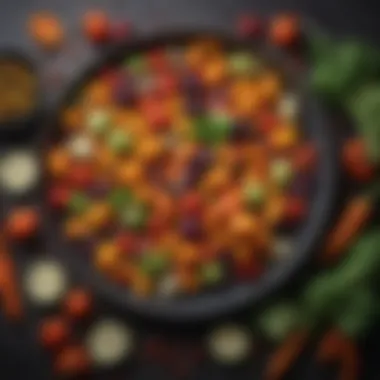
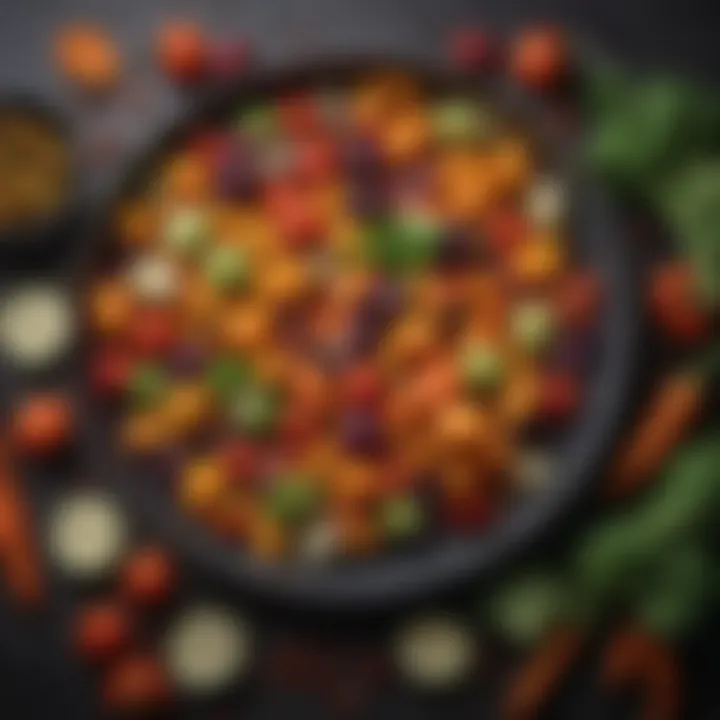
Intro
Pickling is a culinary practice that has persisted through generations, celebrated for its ability to preserve food while enriching flavors. At the core of this process lies pickling juice, a carefully crafted liquid that transforms fresh ingredients into tangy, flavorful delights. Understanding how to create pickling juice is not just about following a recipe; it is about grasping the intricacies of flavor combination and ingredient handling.
This guide serves as a comprehensive exploration of methods used to craft pickling juice. Whether you are a novice eager to learn or a seasoned cook looking to refine your craft, this article will provide essential knowledge. We will delve into crucial components, variations in flavor, and practical applications. By the end, you will have a solid foundation to create pickling juice tailored to your taste.
Recipe Overview
Recipe Name
Classic Pickling Juice
Brief Description of the Dish
Classic pickling juice is a versatile blend that pairs well with a variety of vegetables and fruits. Its balance of acidity and spice enhances the natural flavors of the produce, resulting in a satisfying marinated dish. This recipe encapsulates the essence of pickling, providing a base that can be adjusted according to personal preference.
Ingredients List
Main Ingredients
- Water
- Distilled white vinegar
- Sea salt or kosher salt
- Sugar (optional)
- Spices (e.g., dill, mustard seeds, black peppercorns)
Optional Ingredients
- Garlic cloves
- Hot peppers
- Bay leaves
- Fresh herbs (e.g., thyme, rosemary)
"The beauty of crafting pickling juice lies in its adaptability; each batch can be a unique representation of taste and creativity."
The choice of main and optional ingredients can significantly affect the overall flavor profile of the pickling juice. Water and vinegar provide the acidity necessary for preservation; their ratio can be adjusted based on the desired intensity. Salts and sugars are crucial as well, contributing not only to taste but also to texture and balance.
Furthermore, spices and optional ingredients allow for customization. Adding garlic cloves can introduce a rich, aromatic note, while hot peppers can give a spicy kick. Experimenting with these elements can lead to a personalized pickling experience that reflects individual tastes.
Overall, crafting pickling juice is about innovation and tradition coming together. You can embrace this culinary tradition and elevate your pickling endeavors in your own kitchen.
Understanding Pickling Juice
Understanding pickling juice is crucial for both culinary enthusiasts and those who seek to preserve the harvest of their home gardens. Pickling serves not only as a method of preservation but as a way to enhance the flavor of various foods. This section dives into the definition, purpose, and historical context, providing a solid foundation for why crafting pickling juice is an important skill.
Definition and Purpose
Pickling juice can be defined as a solution primarily composed of vinegar, salt, and various spices. It provides a sharp and tangy flavor that complements a wide range of vegetables and fruits. The main purpose of pickling juice is to create a brine that can safely preserve food while infusing it with robust flavors. Through the pickling process, the acidic nature of vinegar helps to inhibit the growth of harmful bacteria, extending the shelf life of the pickled goods. Moreover, this process transforms ordinary ingredients into something vibrant and exciting, making even the simplest vegetables stand out on the table.
In simple terms, pickling juice is the heart of the pickling process. Without it, one cannot truly engage in this traditional method of food preservation. It is essential to understand how to balance the core ingredients to achieve not just preservation but also the desired taste and texture of pickled items.
Historical Context
The practice of pickling can be traced back thousands of years across various cultures. It is believed that pickling originated as a method to preserve foods before the invention of refrigeration. Ancient civilizations, including the Egyptians and Romans, utilized pickling as a way to prolong the freshness of their food supplies.
Throughout history, the art of pickling has evolved. In regions such as India, pickling spices include mustard seeds and turmeric, which offer unique flavors. In contrast, the American palate has been shaped by sweet and tangy pickles, which speak to a different culinary tradition. Each culture contributes its own twist on pickling, illustrating how versatile and adaptable this technique can be.
Understanding these historical elements enriches the practice of crafting pickling juice today. By incorporating traditional methods and flavors, one can connect with a broader culinary heritage while also exploring modern tastes and preferences. In summary, examining the definition, purpose, and history of pickling juice fosters a deeper appreciation for the craft.
Basic Components of Pickling Juice
Understanding the basic components of pickling juice is crucial for mastering this age-old preservation method. Each element plays a key role in flavor development, preservation efficiency, and overall success of the pickling process. Selecting the right ingredients helps in achieving desired taste and texture. A well-balanced pickling juice can transform simple vegetables into flavorful accompaniments.
Vinegar Selection
Types of Vinegar
Vinegar is a cornerstone of pickling juice, providing the essential acid that preserves vegetables. Different varieties of vinegar offer unique flavor profiles and acidity levels.
Common types include:
- Distilled White Vinegar: High acidity and relatively neutral flavor. It is a popular choice for most pickling needs.
- Apple Cider Vinegar: Offers a fruity note, making it great for sweeter pickles.
- Red or White Wine Vinegar: Adds complexity to pickling juice but can be milder in terms of acidity.
Each vinegar type is beneficial depending on the end result desired. Distilled white vinegar is the most commonly used due to its sharpness and preservation efficiency. Its clear nature also maintains the appearance of the pickles well. However, using apple cider vinegar can deepen flavor, especially for vegetables like cucumbers.
Acidity Levels
Acidity is a critical factor in pickling. The ideal acidity level for safe home canning is a minimum of 4.6 pH, which effectively prevents harmful bacteria, making food safe to eat.
Furthermore, higher acidity can lead to a more pungent flavor. Using vinegar with an acidity level around 5% is typical, balancing flavor and safety well.
While low acidity can yield softer pickles, it increases the risk of spoilage. Hence, careful attention to acidity ensures long-lasting results in pickling practices.
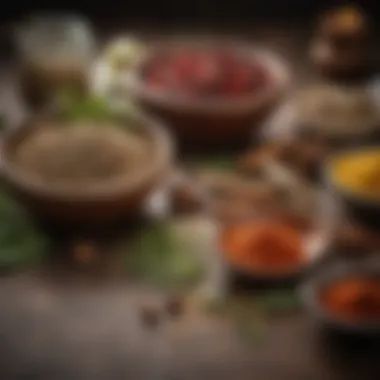

Salts and Sugars
Role of Salt
Salt serves multiple functions in pickling juice, acting not only as a flavor enhancer but also protecting against spoilage. It draws moisture from vegetables, aiding in their crisp texture and enhancing their natural flavors.
Different types of salt can be used, such as kosher salt or pickling salt, both of which dissolve easily without additives. Notably, table salt should be avoided since its anti-caking agents may cloud the brine.
Using salt to create a brine helps maintain crunchiness and adds a savory depth to the flavor experience.
Sweetening Options
Sugar can be optional, but many pickling processes benefit from its addition. Sweetening options might include granulated sugar, honey, or alternatives like stevia, depending on dietary preferences.
Balancing sweetness with sourness leads to more nuanced flavors. For instance, sweetening with honey can impart extra depth and richness not found in plain sugar.
When not used excessively, sugar helps in allaying acidity without overpowering it, providing a balanced profile suitable for various vegetables.
Spices and Aromatics
Common Spices
Spices contribute complexity to pickling juice. Common choices include mustard seeds, coriander seeds, peppercorns, and allspice. These ingredients provide fragrant notes that enhance the overall flavor.
Adding spices not just elevates the taste but can also introduce beneficial compounds that may enhance preservation. Different spices yield different results, which allows for a variety of possibilities.
Herb Variations
Using herbs for flavor can take pickling juice to another level. Dill, thyme, bay leaves, and oregano are frequently incorporated into recipes. Each herb offers distinct characteristics that contribute to the final product.
For example, dill is particularly popular in cucumber salads or dill pickles, providing freshness and vibrancy. On the other hand, thyme adds warmth and depth that can work well with winter vegetables.
As these components blend together, they create an aromatic experience that sets apart homemade pickles from store-bought varieties.
Key Takeaway: Selecting the right basic components is crucial in crafting effective and delicious pickling juice.
Step-by-Step Guide to Making Pickling Juice
The process of making pickling juice is vital for anyone interested in the culinary arts, particularly when it comes to preserving vegetables. Understanding this method allows both amateurs and professionals to explore the flavor profiles of various produce. Each step contributes significantly to the final result, ensuring that the juice is not only safe but also delicious. The following sections will break down the process into manageable parts, allowing readers to gain clarity on each element that makes up this essential recipe.
Gathering Ingredients
Gathering the right ingredients is the foundation of quality pickling juice. The primary components you will need include vinegar, salt, sugar, and an assortment of spices.
- Vinegar: Choose a high-quality vinegar. Apple cider or white vinegar are commonly used due to their acidity and flavor.
- Salt: Use non-iodized salt for the best results. This helps prevent unwanted flavors that can come from iodized salt.
- Sugar: Depending on your taste preference, sugar adds a hint of sweetness to balance the acidity of vinegar.
- Spices and Aromatics: Include spices like mustard seeds, coriander, or dill to enhance the flavor.
Ensure all ingredients are fresh and measured correctly, as this will affect both taste and preservation.
Mixing the Base
Once your ingredients are gathered, it is time to combine them. Start by selecting the ratio of vinegar to water. A common ratio is 1:1, although it can be adjusted based on desired acidity. Mix together the chosen vinegar, water, salt, and sugar in a clean container. Stir until the salt and sugar are fully dissolved.
- Tip: Always taste your mixture at this stage. Adjust salt and sugar according to your liking.
It is crucial to ensure that all base ingredients are well combined, as this will lay the groundwork for a flavorful pickling juice.
Heating and Dissolving
Heating the mixture is an important step. Combine the mixed ingredients in a pot and gently heat them on the stove. Be careful not to boil. The heat helps to further dissolve the salt and sugar, creating a uniform solution.
Watch for steam and avoid reaching boiling point.
Important note: Always stir continuously, as this prevents sticking and burning at the bottom. Once everything is dissolved, remove it from the heat and let it cool slightly.
Cooling and Storing
After heating, allow your pickling juice to cool. This is vital because adding hot liquid directly to vegetables can result in uneven pickling and overcooking. Cool the mixture to room temperature before using it.
Once cooled, transfer the pickling juice to sterilized containers.
- Storage Options: Use glass jars with tight-fitting lids to protect against contamination.
- Tip: Label each jar with the date and contents for easy reference.
Storing in a cool, dark place will extend the shelf life of your pickling juice. Depending on the ingredients used, it may be kept for several weeks to a few months.
Remember, the quality of your pickling juice ultimately affects the flavors of your preserved vegetables. Take your time with each of these steps to ensure success.
Variations of Pickling Juice
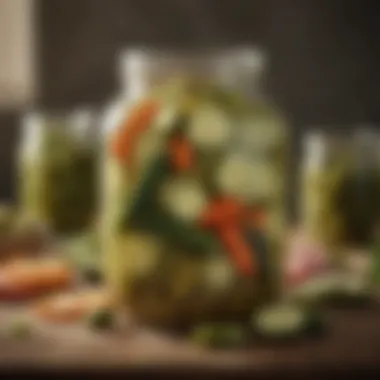
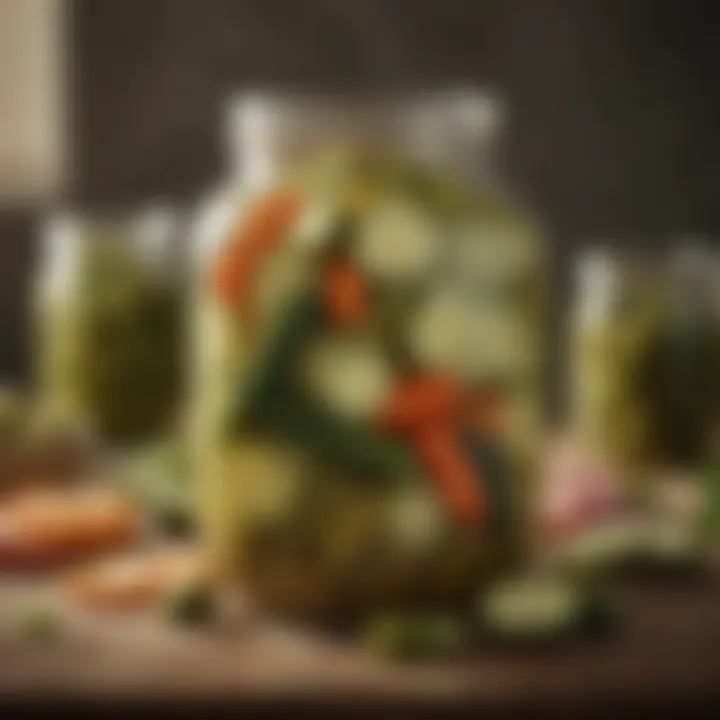
Exploring different variations of pickling juice is essential for expanding culinary horizons. Variations introduce new flavors and textures that can enhance vegetables, fruits, and even proteins. These adaptations can cater to seasonal produce availability, regional preferences, or experimental culinary trends. Understanding these variations allows home cooks to maximize their pickling efforts, ensuring that each jar reflects both tradition and innovation.
Regional Styles
American Sweet Pickles
American sweet pickles are characterized by their balance of sweetness and tang. Made with cucumbers that are brined in a vinegar solution combined with sugar, these pickles are a staple in many households. Their sweet flavor makes them a versatile ingredient; they can be enjoyed on their own or as an accompaniment to sandwiches and barbecue dishes.
The distinct sweetness comes from using granulated sugar, which not only preserves the cucumbers but also imparts a unique flavor profile that sets them apart from other types of pickles. A downside can be the potential excess sweetness, which may not appeal to everyone. However, American sweet pickles remain one of the favorite choices due to their accessibility and deliciousness.
Japanese Tsukemono
Japanese Tsukemono represents a broader category of pickled vegetables distinct for their vibrant flavors and textural qualities. Utilizing a combination of vinegar, salt, and sometimes miso, Tsukemono can include a variety of vegetables such as daikon radish, cucumbers, and eggplant.
What makes Tsukemono particularly appealing is their role in Japanese cuisine as a palate cleanser and side dish. They often offer a refreshing contrast to richer dishes, making meals more balanced. One disadvantage may be the complexity of the preparation process and the need for specific ingredients that might not be readily available everywhere. However, the health benefits and unique flavors justify the effort.
Seasonal Adaptations
Summer Vegetable Picks
Summer vegetable picks are an excellent way to preserve the flavors of the season. During summer, a plethora of fresh vegetables like zucchini, green beans, and tomatoes are available. These vegetables can be pickled with a light brine, allowing them to maintain their crunch and freshness.
The bright and lively taste of summer vegetables blends well with herbs, making them an ideal addition to salads and antipasto platters. These seasonal options are favored for their ability to encapsulate the essence of summer. However, one downside could be their shorter shelf life compared to other pickles, requiring careful consumption.
Winter Root Vegetables
Winter root vegetables bring a hearty quality to pickling. Varieties such as carrots, beets, and turnips are prevalent during colder months. The pickling process allows these root vegetables to retain their nutrients while introducing a new flavor profile.
These vegetables tend to be firm and flavorful, providing a satisfying crunch when pickled. They are particularly beneficial as they can provide sustenance during harsher climates. However, their preparation might take longer and often requires peeling and chopping, which could deter some from opting for these variants.
Experimental Flavors
Exotic Ingredients
Diving into exotic ingredients for pickling can unleash creativity. Ingredients such as mango, tamarind, and various chili peppers can infuse pickles with unique flavors that might attract adventurous eaters. Exotic ingredients allow for a fusion of culinary traditions, resulting in products that are novel and tantalizing.
The adventurous nature of these ingredients can enhance typical pickling practices, appealing to those with an inclination toward global cuisine. However, sourcing these may sometimes pose a challenge, and balancing flavors can require a deeper understanding of pairing.
Fusion Techniques
Fusion techniques in pickling involve combining methods from different culinary practices. This can lead to inventive blends such as kimchi-style pickles or spicy dill variations with added Asian influences. These techniques manifest the blend of cultures onto the cutting board, offering a wider range of flavor profiles.
Such experimentation can invigorate traditional pickling processes, encouraging creativity in the kitchen. The potential drawback may be an overwhelming complexity that could confuse the taste if not executed thoughtfully, but successful fusion can yield delightful surprises for the palate.
Common Mistakes to Avoid
In the world of pickling, the juice plays a critical role in determining the flavor and safety of the final product. However, mistakes can occur during the process. Understanding common pitfalls can help both new and experienced picklers avoid disappointment and ensure a successful outcome.
Improper Acidity Levels
One major mistake is not paying enough attention to the acidity levels in the pickling juice. The ideal pH for safe pickling is below 4.6. This low acidity is key to preventing the growth of harmful bacteria, particularly Clostridium botulinum, which is responsible for botulism.
When making pickling juice, using the correct vinegar type is essential. Many may choose vinegar based solely on personal preference or taste without considering its acidity content. White vinegar and apple cider vinegar are common choices because they typically have a high acidity level of about 5%. Utilizing a vinegar with a lower acidity could lead to a dangerous environment for spoilage organisms.
Over-Seasoning
Another frequent mistake is over-seasoning the pickling juice. While spices and herbs can enhance flavors, too much can overwhelm the natural taste of the vegetables. Balance is crucial. When experimenting with spices, start with smaller quantities and adjust gradually. Common spices include dill, mustard seeds, and coriander. Overdoing it can result in an unpalatable product that loses the essence of what pickling should taste like.
Ineffective Storage Methods
Proper storage methods are vital to the longevity and flavor of pickled goods. Ineffective methods can lead to spoilage or diminished crunchiness.
Temperature Considerations
Temperature plays a significant role in the preservation of pickled items. Ideally, pickles should be kept in a cool, dark environment. The refrigerator can be an excellent choice for short-term storage. However, for long-term storage, ensure the jars are properly sealed and stored in a dark place at stable temperatures. This minimization of temperature fluctuations contributes to maintaining their quality.
Key characteristics of effective temperature management include:
- Keeping jars at a low, consistent temperature prevents spoilage.
- Avoiding exposure to light helps to maintain flavor integrity.
i Although refrigeration is popular, it may not be always feasible. Understanding characteristics like fermentation temperature can add complexity to the pickling process and enhance flavor profiles, but it might lead to inconsistency if not properly monitored.
Packaging Options
Choosing the right packaging for your pickling juice is equally important. Glass jars are typically the most popular choice. They are non-reactive and provide a tight seal, which is essential for preventing contamination and spoilage. Additionally, glass allows you to see the contents, which is visually appealing.
Considerations for packaging include:
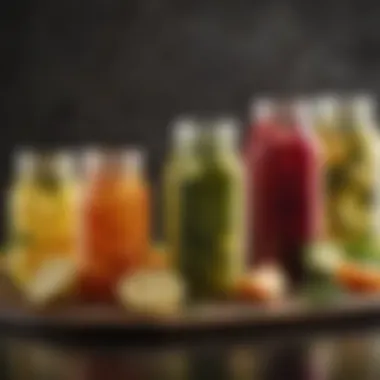
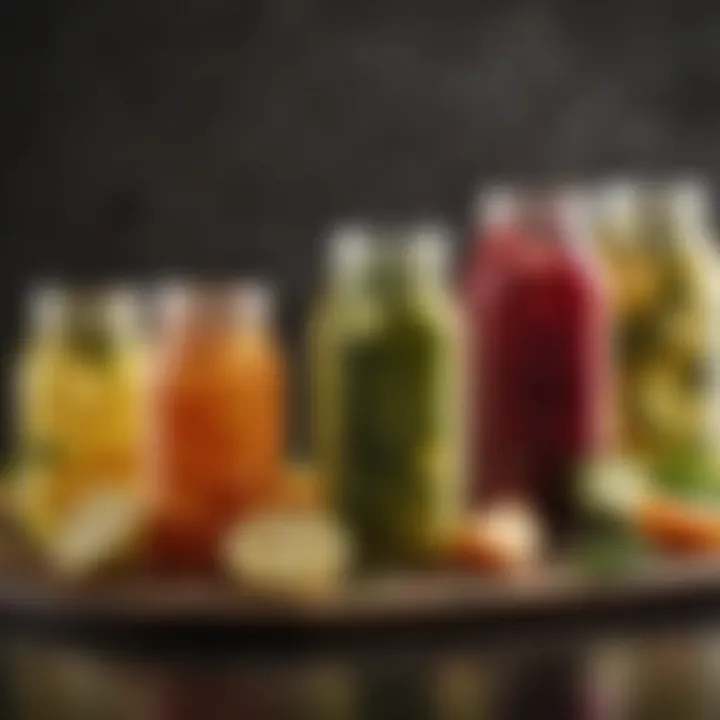
- Choosing airtight containers can prevent exposure to pollutants.
- Using plastic options should be approached with caution; not all plastics are ideal for acidic foods.
In summary, packaging directly affects the longevity and safety of your pickled items. Careful selection can lead to better results while ensuring flavor protection.
Applications of Pickling Juice
The application of pickling juice extends beyond merely preserving vegetables. It serves as a versatile ingredient that can elevate various culinary experiences. Understanding the multifaceted uses of pickling juice enables both novices and seasoned chefs to integrate it into diverse dishes, maximizing flavor while minimizing waste. The versatility of pickling juice lies in its ability to impart tangy notes and complex flavors to both simple and gourmet dishes. Moreover, its potential for reuse exemplifies sustainability in cooking practices, reinforcing the idea of making the most out of your ingredients.
Pickled Vegetables
Pickled vegetables are perhaps the most traditional application of pickling juice. This method enhances the crunch and freshness of various vegetables, making them an ideal accompaniment to meals. From cucumbers to radishes, the right pickling juice can preserve the natural qualities of the vegetables while adding a delightful zing. The important aspect here is the ability to customize the pickling solution based on the vegetables used. Additionally, homemade pickled vegetables often taste superior to store-bought alternatives, allowing for a more personal connection to the culinary process.
Enhancing Dishes
Salads
Salads can significantly benefit from the addition of pickling juice. The sour and sweet elements of the juice enhance the overall taste, providing a refreshing contrast to other components. Incorporating pickled elements into a salad not only elevates its flavor but also adds a unique texture. Salad varieties such as coleslaw and mixed greens become more interesting with the bite of pickled cucumbers or onions. This approach is beneficial for those looking to create more complex and flavorful dishes without overwhelming the palate. However, it is essential to balance the amount of pickling juice used to avoid overpowering the other flavors.
Sandwiches
Sandwiches also gain an advantage from using pickling juice. The inclusion of pickled ingredients as fillings or dressings introduces a lively taste profile that can transform a mundane sandwich into something extraordinary. The tanginess from the pickled components cuts through the richness of meats and cheeses, enhancing overall satisfaction. This makes pickled vegetables a popular addition for many types of sandwiches, be it a classic deli sandwich or a vegetarian option. A potential disadvantage is the extra liquid from the pickled vegetables, which may make the sandwich soggy if not balanced with other ingredients.
Utilizing Leftover Juice
Marinades
Leftover pickling juice can serve as an excellent marinade for various proteins. The acidity helps to tenderize meats while introducing a unique flavor profile. This application is especially popular for chicken and fish, where the pickling juice can infuse the protein with depth and complexity. The beauty of this approach is that it maximizes the use of ingredients, ensuring that nothing goes to waste. However, the intensity of the flavors may vary based on how long the protein marinates, necessitating careful timing to avoid overpowering the natural taste of the meat.
Dressings
Using pickling juice in dressings provides an easy way to convert leftover juice into something delightful. The zesty characteristics can brighten up basic vinaigrettes and make them more exciting. By mixing it with oil, herbs, and spices, one can create a dressing that complements salads and grilled dishes alike. This application is particularly beneficial for those seeking to add a quick flavor boost without extensive preparation. However, similar to marinades, balancing the acidity of the dressing with other ingredients is essential to achieve a harmonious blend.
Safety and Preservation Considerations
Safety is a critical aspect when it comes to crafting pickling juice. Understanding how to properly handle and store pickling juice can prevent foodborne illnesses, such as botulism, which can have serious consequences. Preservation techniques also ensure that your pickled creations maintain their flavor and texture for an extended period.
It is essential to recognize that improper practices can lead not only to the spoilage of the pickled products but also to health risks. This section will focus on two key areas: understanding botulism risks, and proper storage techniques.
Understanding Botulism Risks
Botulism is caused by Clostridium botulinum, a bacterium that can produce a toxin leading to paralysis. The bacteria thrive in low-acid, anaerobic environments, which means standard canning methods can be risky if proper acidity levels are not maintained.
Here are some important considerations regarding botulism:
- Acidity Levels: Ensure that the acidity of your pickling juice is sufficient, typically around 5% acetic acid for safe preservation. Vinegar is the primary source of this acidity.
- Canning Process: When canning, use a pressure canner for low-acid foods and ensure that pH levels are tested before sealing jars.
- Signs of Spoilage: Be aware of any abnormal smells, bulging lids, or unexpected cloudiness in jars, as these may indicate toxin presence.
Remember: Always prioritize safety by following tested recipes and required acidity levels.
Proper Storage Techniques
After making pickling juice, proper storage plays a crucial role in preserving its quality and safety. Here are some practices to ensure safe storage:
- Temperature Control: Store pickling juice in a cool, dark place. The ideal temperature ranges from 50°F to 70°F. Avoid heat sources such as stoves, as high temperatures can degrade quality.
- Container Sealing: Use clean, sterilized jars with airtight seals to minimize exposure to air, which can introduce bacteria.
- Refrigeration: Once opened, store pickled products in the refrigerator and consume them within a few weeks to guarantee freshness.
- Labeling: Make sure to label jars with the date of preparation and their contents for better organization and tracking.
Following these safety and storage guidelines will not only help you avoid potential health hazards but also allow your pickling efforts to be enjoyed for months to come.
The End and Key Takeaways
In any culinary endeavor, understanding the intricacies of the subject matter is essential, and pickling juice is no exception. This article has meticulously covered various aspects, from its basic components to its diverse applications. Crafting pickling juice not only enhances flavors but also extends the life of many vegetables, making it a valuable skill in today's kitchen.
Several key elements emerged throughout our exploration. First, the choice of vinegar plays a crucial role, with different varieties offering unique profiles that can elevate the pickling experience. Secondly, the correct balance of salts and sugars synergizes with spices to create the desired taste. Improper ratios lead to inconsistencies that may ruin your efforts. Understanding how these components work together is imperative.
Moreover, the safety considerations mentioned equip readers with the knowledge to prevent foodborne illnesses associated with improper pickling. Recognizing the risks, like botulism, allows for safe enjoyment of homemade pickles.
Ultimately, the takeaway from this article is simple yet profound: pickling juice is both an art and a science.
"The balance of flavors and attention to safety defines successful pickling."
Embracing the guidelines provided here can lead to experimentation and personalization, an essential part of the culinary journey.
Recap of Important Points
In summary, we discussed the following critical points:
- Vinegar selection: Choosing the right vinegar, such as apple cider or white wine, directly influences the overall flavor.
- Salt and sugar balance: Experimenting with different amounts can adjust taste and texture.
- Diverse spices: Utilizing a range of spices allows for unique flavor profiles.
- Safety practices: Following proper storage methods can prevent health risks.
- Applications: Pickling juice serves many purposes beyond pickling, such as enhancing salads and meats.
Encouragement for Experimentation
The most exciting aspect of crafting pickling juice is the opportunity to innovate. Each recipe can be a canvas for your culinary creativity. Do not be afraid to alter traditional formulas. Consider incorporating non-traditional ingredients, like exotic spices or fruits, for unexpected results.
Start with basic recipes, then gradually modify them to suit your palate. Keep track of the adjustments made, so you can replicate successful experiments or refine less favorable ones.
Engaging with various vinegar types and blending spices can inspire your creations. The beauty of pickling is that even failed attempts can lead to new discoveries. Therefore, let your taste buds guide you—find a blend that resonates with your preferences, and have fun with the process.







